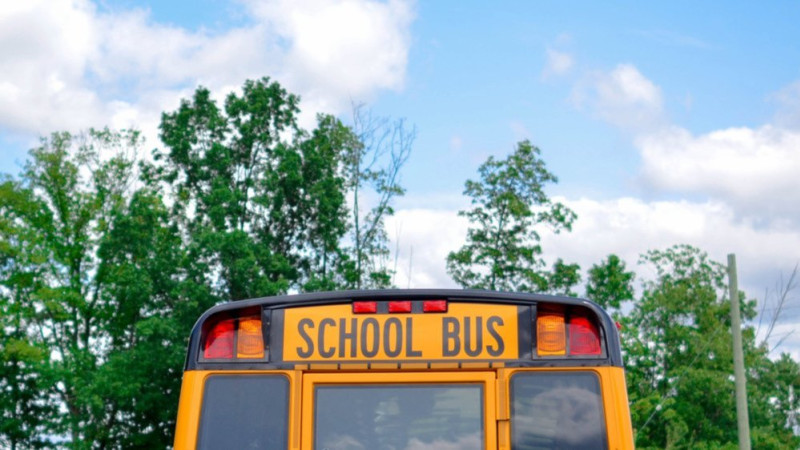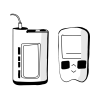Device Combo

Why did you choose a sensor and injections?
I used to be on a meter and injections. I was family planning and my doctor insisted on the pump and CGM for pregnancy. I tried the pump for 9 months and was miserable. My A1c went from 6.0 to 7.5 and the anxiety of being constantly connected to a device whose failure mode is my BS out of control was terrifying. It didn’t fit in my workout clothes that I wore daily for coaching weightlifting and teaching dance, and I couldn’t hide it anywhere easily in my suit for engineering customer meetings. I was miserable and switched doctors to go back on shots. My new doc suggested the CGM to help me catch highs and lows before they are critical, so I went on it a year before getting pregnant. My A1c came back down and has been at 5.8 since I started the CGM with shots. I can catch lows earlier and stop highs from getting out of control by catching them early. I use apps to track my meals and time in range, and was able to have a very successful pregnancy with a very healthy baby boy. I was adamant I’d stop using it once the baby was born, but I actually started liking seeing my plots and avoiding the lows and highs. I’m still not on board with the pump but I have helped a few friends get started on the CGM!
What are the trade-offs of using a sensor and injections?
Watching the arrows has made a huge difference. When I start to rise after a meal I can quickly go for a walk or add a unit shot and eat later. Having my husband able to watch my numbers on his phone and call me when I drop suddenly at the grocery store with my son, asking, "Are you ok? Do you need me?" Breastfeeding or at the gym, I can see drops from 100->60 so I can snack while teaching without the low sweats and losing coherence. The CGM has increased control and has helped me update my long-acting and fast-acting insulin to keep me stable through the day!
Diabetes devices can produce a lot of information and numbers. How do you feel about this? What do you do with all the data?
I use an app called Glooko. When pregnant, I would log all of my meals so I could see how my numbers were affected. It syncs with a Fitbit so I can also watch how exercise affects my numbers. Glooko takes all the data and makes charts my doctor can use, and makes everything feel less overwhelming. I get “time in range” plots, and it logs insulin and food in one place.

These are my devices.
How do you respond to people when they notice or comment on your devices?
I used to HATE it. Until an 8 year old girl saw it on my arm and commented that hers looks just the same but her stickers are prettier. I calmed down a bit and now just explain to folks what it does, how it works, and how easy it is to use. I think parents of T1D kids have been the most interested because of the tracking features, and it’s no less weird than all the fitness trackers people choose to wear.
How do you make the devices comfortable on your body?
The biggest issue is finding a squishy spot that won’t get tugged or pulled by a seat belt or by my son's grabby fingers. The “sudden tear out” is my biggest fear and part of why I hated the pump. The belly works well unless my son is in his carrier. The back is good unless I’m teaching dance. The arm is good unless I’m weightlifting because the amount of blood flow changes my readings. It’s a real challenge. I use my cell phone as the receiver which cuts down on the “diabetes junk” I need to carry around, but the phone barely fits in pockets so it’s awkward as well. Fortunately, I have always had huge purses for my diabetes supplies, so adding a meter, receiver, needles, pens, or a large phone isn’t a huge deal.
What helps you trust your devices?
The CGM offers extra information, but I am not reliant on its success. If it fails or expires I just reinsert when I get home or restart and wait 2 hours. CGM failure for me is an inconvenience but not life threatening. So while the stress of not knowing may make my numbers rise, I am only as reliant as I can be on the technology-- which helps. The Dexcom support team also let me speak with the engineering team to make sure my work environment and labs wouldn’t cause issues, so I have been able to build trust slowly. I’m pretty stubborn, so the fact I am even using it is crazy!
What would you tell someone considering this same combo and deciding if it is worth the money?
It is worth it. If you are on injections and have any workout routine or hormone changes or stress that can affect how your insulin works, it is an amazing way to understand your long- and short-acting insulin needs. Most insurance will work with the vendors, and doctors know how great a tool the CGM is, so they are always ready to help work with insurance companies and the manufacturer. These devices save lives and as horrible as I find it being constantly tethered, it has saved me from overnight lows, prolonged highs, and has helped me stay active with very little risk and fewer finger sticks. (I still finger stick a lot).
What challenges do you have and how have you overcome them?
I make sure to double up insulin pens in my purse as soon as my current one is at 40 units. Then I end up carrying 2 pens for a week but I rarely run out. I keep zip lock baggies of pen needles everywhere so I’m never too far away from a stash. The CGM is harder because I don’t like leaving sensors in places like my car or office. For that, I tend to try and change it the same day every week, and if I end up not at home, I will just restart it while out and change it at my next convenient moment.
More Wisdom

Even though my pump has malfunctioned before it is worth having because my blood sugar is more in control when I use it.
Ashley


Diabetes is one piece of my life that I now have some control over.
Kelsey


I get tired of the CGM beeping at me at times especially if my blood sugar is low and I’m waiting for it to climb, but I’m thankful it wakes me up at night!
Joyce




